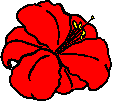 Shields
Gardens
Shields
Gardens
| Home |
| Daylilies |
| Rare Bulbs |
| Clivia |
| Seed Sales |
| E-Mail and Chat |
| Photo Gallery |
| Information |
| Sources |
| Guest Sites |
| Societies and Clubs |
| Links |
| People |
| About Us |
A clivia plant is generally considered to be mature, and old enough to bloom, when it has produced 12 to 14 leaves. This can happen any time between two years of age for some of the newest Belgian strains, to over five years. Plants grown uner intensive care, under cover, even in cold climates, can be expected to bloom significantly sooner than will plants grown outdoors in the garden in mild climates.
Mature Clivia plants grow leaves in sets of four, followed by the start of an inflorescence (flowering structure). If the plant is kept warm, kept carefully watered, and fed from time to time, it will continue this cycle indefinitely, without ever flowering. The small flower buds produced after every fourth leaf can stay small and latent (inactive) forever. Eventually, the older latent inflorescences will disappear if the plant is not induced to flower
To induce a mature clivia plant to flower, the growth cycle must be interrupted. It is usually advisable to stop watering the plant at this time. The plant must be exposed to cool temperatures for the equivalent of about 25 to 30 days and nights. The temperatures should be kept between 55°F (13°C) and 34°F (1°C) during this period. Do not expose the plant to freezing temperatures (32°F or 0°C) at any time. If warmer temperatures are unavoidable occasionally during this critical cooling period, the overall cooling time may have to be extended. Without adequate cooling, the latent flower structure will not be activated, and the plant will not bloom, no matter how mature and otherwise healthy it is.
When you deem that the plant has had sufficient cooling, it will be time to increase the temperatures to the range 65°F (18°C) to 75°F (24°C). Then watering can be resumed, cautiously at first. Excess water on the roots before the plant starts into active growth again can cause rot.
It has been said that the nutrient potassium (symbol "K"), sometimes referred to as potash, is essential for the proper development of the flowering structure. Accordingly, we recommend that cautious feeding with a soluble plant food high in potassium be initiated at this time. See our page on Clivia Nutrition for more information.![]()
When the plant starts to bloom, you will first see the new inflorescence as a tight cluster of buds deep down between the leaves, to one side of the central growing point. The new buds usually appear also slightly to one side of the leaves. We suggest turning the container in which your clivia is growing every day until the flowers start to open, so that the new flower scape will not lean to one side.
For information about this account, contact:
James E. Shields, webmaster at <shieldsgardens@gmail.com>
10 February 2012
© Copyright 2012 by James E. Shields. All rights reserved.